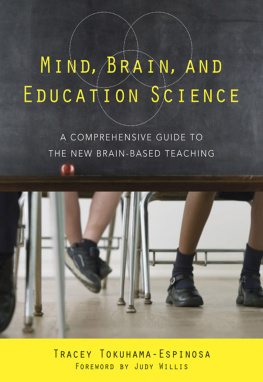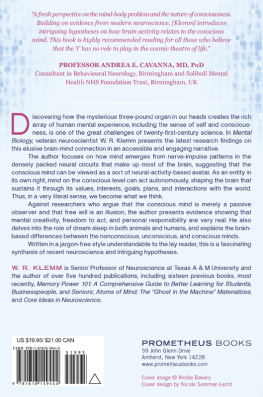The Mind and the Brain
Neuroplasticity and the Power of Mental Force
Jeffrey M. Schwartz, M.D., and Sharon Begley

To my parents, who never stopped believing in me;
and to Ned, Sarah, and Daniel, for enduring.
Sharon Begley
To the Venerable U Silananda Sayadaw on the occasion of his seventy-fifth birthday
Jeffrey M. Schwartz
May all beings be well, happy, and peaceful
When he speaks of reality the layman usually means something obvious and well-known, whereas it seems to me that precisely the most important and extremely difficult task of our time is to work on elaborating a new idea of reality. This is also what I mean when I always emphasize that science and religion must be related in some way.
Wolfgang Pauli, letter to M. Fierz, August 12, 1948
It is interesting from a psychological-epistemological point of view that, although consciousness is the only phenomenon for which we have direct evidence, many people deny its reality. The question: If all that exists are some complicated chemical processes in your brain, why do you care what those processes are? is countered with evasion. One is led to believe thatthe word reality does not have the same meaning for all of us.
Nobel physicist Eugene Wigner, 1967
Contents
The Matter of Mind Brain Lock Birth of a Brain The Silver Spring Monkeys The Mapmakers Survival of the Busiest Network Remodeling The Quantum Brain Free Will, and Free Wont Attention Must Be Paid

{ }
This book has a virtual, third coauthor: Henry Stapp, whose research into the foundations of quantum mechanics provided the physics underpinning for JMSs theory of directed mental force. For that, and for the countless hours he spent with the authors explaining the basics of quantum theory and reviewing the manuscript, we owe our deepest gratitude.
For more than a decade the Charles and Lelah Hilton Family provided donations to support the academic career of JMS at UCLA.
Scores of scientists and philosophers gave tirelessly of their time to discuss their research or review the manuscript, and often both. Our heartfelt thanks to Floyd Bloom, Joseph Bogen, David Burns, Nancy Byl, David Chalmers, Bryan Clark, Almut Engelien, John Gabrieli, Fred Gage, Eda Gorbis, Phillip Goyal, Ann Graybiel, Iver Hand, J. Dee Higley, William Jenkins, Jon Kaas, Nancy Kanwisher, Michael Kozak, Patricia Kuhl, James Leckman, Andrew Leuchter, Benjamin Libet, Michael Merzenich, Steve Miller, Ingrid Newkirk, Randolph Nudo, Kevin Ochsner, Don Price, Alvaro Pascual-Leone, John Piacentini, Greg Recanzone, Ian Robertson, Cary Savage, John Searle, Jonathan Shear, David Silbersweig, Edward Taub, John Teasdale, Max Tegmark, Elise Temple, Xiaoqin Wang, Martin Wax and Anton Zeilinger. We thank Christophe Blumrich for the care he took in producing the compelling artwork and, most of all, Judith Regan, Susan Rabiner, and Calvert Morgan for their commitment to this project. To those whom we have forgotten to mention (and we know youre out there), our apologies.
{ }
Hamlet: My father, methinks I see my father.
Horatio: O! where, my lord?
Hamlet: In my minds eye, Horatio.
William Shakespeare
Every Tuesday, with the regularity of traffic jams on I-405, the UCLA Department of Psychiatry holds grand rounds, at which an invited researcher presents an hour-long seminar on a topic of clinical relevance. One afternoon in the late 1980s, I saw, posted on a bulletin board at the Neuropsychiatric Institute, an announcement that stopped me cold. One of the nations leading behavior therapists was scheduled to discuss her high-profile and hugely influential work with obsessive-compulsive disorder (OCD), the subject of my own research as a neuropsychiatrist. OCD is a condition marked by a constant barrage of intrusive thoughts and powerful urges, most typically to wash (because patients are often bombarded with thoughts about being dirty and contaminated with deadly pathogens) and to check (because of irresistible urges to make sure an appliance has not been left on, or a door left unlocked, or to satisfy oneself that something else is not amiss). I had a pretty good idea of what to expectthe speaker was widely known in medical circles for her application of rigorous behaviorist principles to psychological illnesses. Rigorous, actually, hardly did the behaviorist approach justice. The very first paragraph of the very first paper that formally announced the behaviorist creedJohn B. Watsons 1913 classic, Psychology as the Behaviorist Views Itmanaged, in a single throw-down-the-gauntlet statement, to deny mans humanity, to dismiss the significance of a mind capable of reflection, and to deny implicitly the existence of free will: The behaviorist, declared Watson, recognizes no dividing line between man and brute.
Rarely in the seventy-five years since Watson has a secular discipline adhered so faithfully to a core principle of its founder. Behaviorists, ignoring the gains of the cognitive revolution that had been building momentum and winning converts throughout the 1980s, continued to believe that there is no need for a therapist to acknowledge a patients inner experiences while attempting to treat, say, a psychological illness such as a phobia; rather, this school holds that all desired changes in behavior can be accomplished by systematically controlling relevant aspects of a patients environment, much as one would train a pigeon to peck particular keys on a keyboard by offering it rewards to reinforce correct behavior and punishments to reverse incorrect behavior. The grand rounds speaker, faithfully following the principles of behaviorist theory, had championed a particular method to treat obsessive-compulsive disorder known as exposure and response prevention.
Exposure and response prevention, or ERP, was a perfect expression of behaviorist tenets. In ERP therapy sessions as routinely practiced, the OCD patient is almost completely passive. The therapist presents the patient with triggers of varying intensity. If, for instance, an OCD patient is terrified of bodily secretions and feels so perpetually contaminated by them that he washes himself compulsively, then the therapist exposes him to those very bodily products. The patient first ranks the level of distress various objects cause. Touching a doorknob in the therapists office (which the patients believes is covered with germs spread by people who havent washed after using the bathroom) might rate a 50. Touching a paper towel dropped in the sink of a public rest room might rate a 65; a sweaty T-shirt, 75; toilet seats at a gym, 90; a dollop of feces or urine, 100. Presenting one of these triggers constitutes the exposure, the first half of the process. In the second half, the response prevention, the therapist keeps the patient from reacting to the trigger with compulsive behaviorsin this example, washing. Instead of allowing him to run to a sink, the therapist waits for the intensity of the patients distress to return to preexposure levels. During this waiting period, the patient is typically quite passive, but hardly calm or relaxed. Quite the contrary: patients suffer unpleasant, painful, intense anxiety in the face of the triggersanxiety that can take hours to dissipate.
The theoretical basis of the approach, to the extent that there is one, involves the rather vague notion that the intense discomfort will somehow cause the symptoms to habituate, much as the intense feeling of cold one feels after jumping into the ocean fades in a few minutes. During these treatment sessions, if a patient asks about the possible risks of exposure and response prevention he is usually rebuffed for seeking reassurance, which supposedly undermines the efficacy of the treatment. And yet examples abound in which the risks endured by patients were only too real. In the United States, therapists in the forefront of developing these techniques have had patients rub public toilet seats with their hands and then spreadwell, then spread whatever they touched all over their hair, face, and clothes. They have had patients rub urine over themselves. They have had patients bring in a piece of toilet paper soiled with a minuscule amount of their fecal material and rub it on their face and through their hair during the therapy sessionand then, at home, contaminate objects around the house with it. In other cases, patients are prevented from washing their hands for days at a time, even after using the bathroom.
Next page

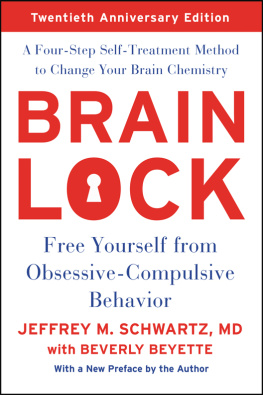



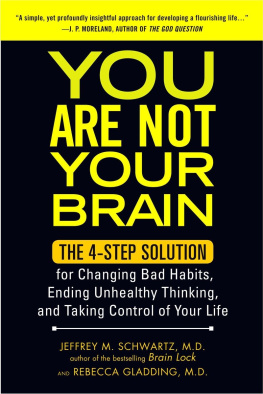
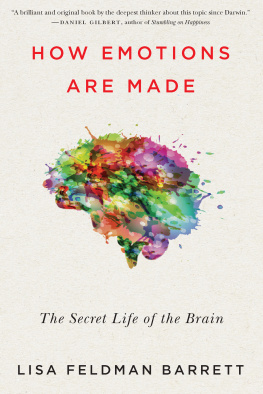

![SpeedyReads [Dell] - Summary of Switch On Your Brain; The Key To Peak Happiness, Thinking, And Health](/uploads/posts/book/117453/thumbs/speedyreads-dell-summary-of-switch-on-your.jpg)
